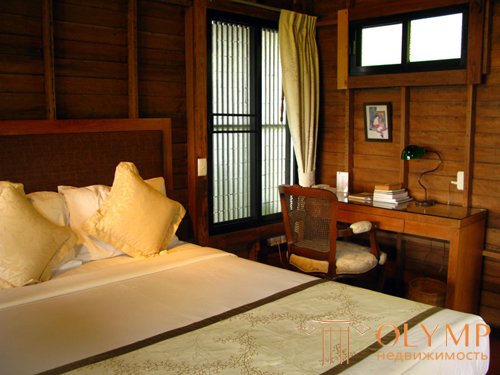
The bungalow ( Hindi bangla - in Bengali style; the allowable pronunciation is bungalow ) is a one-story single-family house, often with a flat roof and a spacious veranda.
Bungalow art is often associated with the tradition of decorating classic American bungalows. In these cozy houses with low ceilings, the most important thing is functionality and the rational use of space.
For a bungalow style house, there is a large porch and a joint backyard. The design of the bungalow uses natural local materials and natural colors. A very big influence on the design of the bungalow had a missionary style. The interior of the bungalow is dominated by an elegant rustic design.
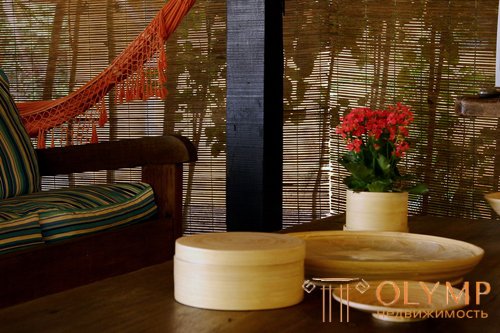
Style Bungalow in the interior, photo
The main features of the bungalow style:
The name "bungalow" originates in the Indian province of Bengal. There, the names of traditional housing and geographical area have one root - “Bangla” or “Bangala”. The eighteenth-century single-story huts with thatched roofs were adapted by the British for colonial officials who spent their holidays in the Himalayas and in the suburbs of Indian cities. Inspired by army tents, English cottages and such exotic buildings as Persian verandahs, the designers of the first bungalows placed the dining room, bedroom, kitchen and bathroom around the central living room and thus created the basic plan of the bungalow, leaving only a few improvements to the followers.
This economical and practical house type conquered North America in the late 19th and early 20th centuries. The first American home, called the bungalow, was designed in 1879 by William Gibbons Preston.
From the east, the idea spread to the west. Naturally, the most suitable place for a bungalow was California - a recognized resort. The first Californian home, named the bungalow, was designed by San Francisco architect A. Page Brown for J. D. Grant in the early 1890s. This bungalow, this half-storey dwelling was built on a high foundation and was located on the hillside.
Ironically, bungalows, which were once considered a symbol of closeness to nature, became typical architecture of cities and suburbs. However, the bungalows have not ceased to associate with the village idyll and the best, “good old” times. No matter how modestly they look, they embody the ideal for most people — detached single-family housing, with a garden — an ideal that has survived to this day.
A distinctive feature of the bungalow is its horizontal orientation. There are no vertically oriented bungalows, although in some cities, such as Sacramento, Seattle and Vancouver in British Columbia, the horizontally oriented type of building is built on a high foundation. Advertising leaflets in the early 20th century almost always indicated that the main purpose of a bungalow was to place as much living space as possible on one floor. The advantages are obvious - the absence of a second floor simplifies the construction process. All the necessary equipment is easier to install than in a two-story house. Security at the highest level, in case of fire, the exit is possible not only through the doors, but also through the windows. In addition, there are no stairs in the bungalow, which is a real gift for aged people, as well as housewives who can do household chores without running up and down stairs.
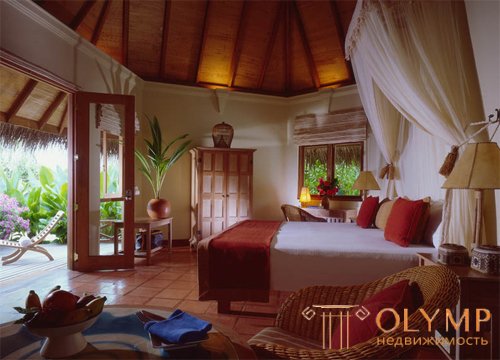
Style Bungalow in the interior, photo
What can induce a person to create an interior in his home in such a simple, rustic way? First of all, a thirst for nature, fatigue from civilization, its endless straight lines and sharp corners. And indeed, if after a long working day, instead of the average apartment, you return to the bungalow, you will surely feel like in a resort or even on an abandoned coast, where it is quiet and peaceful.
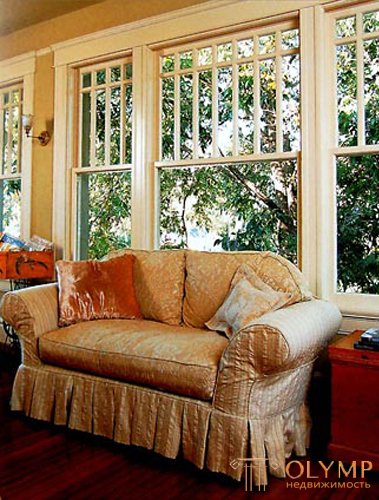
Style Bungalow in the interior, photo
No matter how modestly the bungalow looked, it strangely embodies the ideal of dwelling for many people. Residents of congested high-rise buildings have learned to appreciate such things as simplicity, environmental friendliness and space.
What characterizes this style - a minimum of details, conciseness, primitive forms of furniture (which should not be heavy - if the interior items are massive and heavy, then you will not have a bungalow and hut in the African style). Straw, bamboo stalks, coarse textures and, above all, the air’s fullness of space, not blockage.
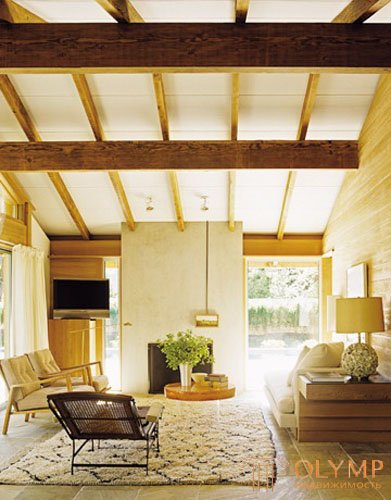
Style Bungalow in the interior, photo
Choosing colors, remember what the desert looks like - white as sugar, golden sunset sun, rich blue sky, dried plant stems - this is the answer to the question of how to arrange your dwelling. It should not be thought that other colors are contraindicated, not at all. It will look very nice red, black blotches, rich purple and maroon. It is worth avoiding bed tones - pink or lilac walls will hardly be appropriate in such an interior.
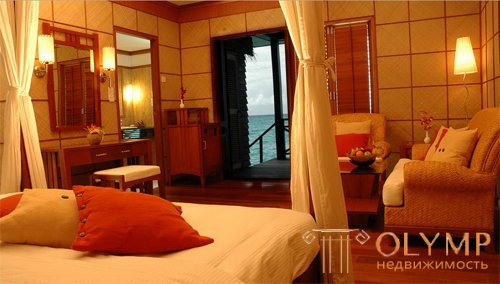
Style Bungalow in the interior, photo
Making the walls, you can use any material - fabric, interior paint, wallpaper, plaster. You can leave the surface monophonic, you can choose floral designs - the main thing is that they are not large and too intrusive, the wall should not attract much attention.
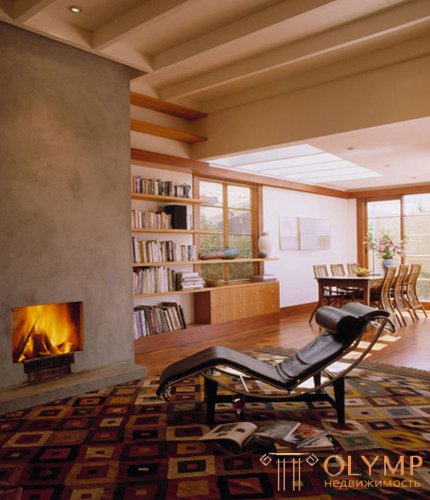
Style Bungalow in the interior, photo
If the design touched the kitchen or hallway, then the walls with exposed brick will look original. It is only desirable to make it not a brick-red color, but to cover it with light paint - in the kitchen it should be a pale shade of ocher, in the hall there is a soft gray. However, it is so to say a matter of taste. On top of the brickwork should be made of wooden planks in the direction of imitating the frame of a traditional bungalow. It will look very comfortable and will remind residents that they do not live in a stone cave, but in a cozy hut.
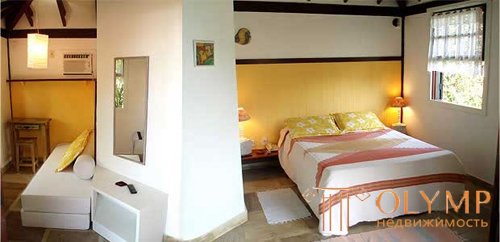
Style Bungalow in the interior, photo
It would be ideal to lay wooden floors, if this is not possible, then you can simply cover them with carpet or large carpet, preferably chocolate or milky.

Style Bungalow in the interior, photo
Do not think that you have to give up your favorite things and change everything to wooden ones. If you like, you can leave plastic or metal products in the living room, they will not “fall out” from the general system if they have fairly simple forms. At the same time, wooden and straw furniture can come into conflict with the environment if the items come from different eras - do not put a baroque chest of drawers in a room where they have already placed a minimalist Arab bed, do not leave classical pilasters and curved capitals in your bungalow. Remember - the main thing here is not the material from which the objects are made and not even the color, but the style. Choosing furniture and decor items, repeat the word “simplicity” every time and then you will definitely not miss!
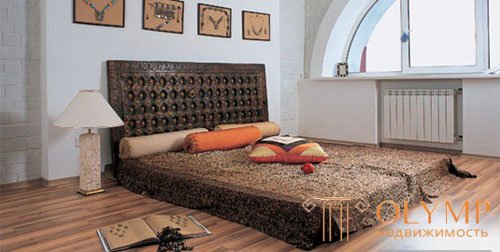
Style Bungalow in the interior, photo
Accessories should be at a minimum, give preference to things handmade, you can do something with your own hands. Put a flowerpots with flowers or trees on the windowsill. Hang the window itself with heavy curtains, the fabric can be coarse, poorly worked out, or, on the contrary, airy and light, to get such an effect, you can put together many layers of light organs. If you do not like classic curtains made of fabric, then you can purchase wood blinds or roller blinds.
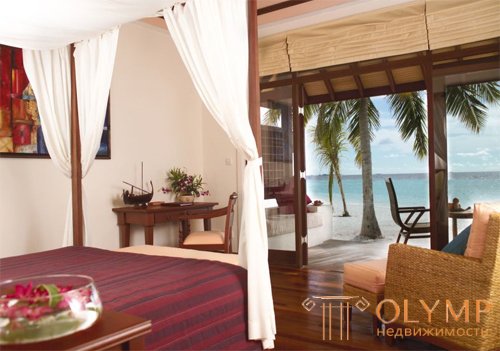
Style Bungalow in the interior, photo
Elegant rustic design dominates the interior of the bungalow. Often used cobblestone and brick, which are made out of fireplaces and other architectural elements.
Bungalow style in the interior always brings to the house the atmosphere of a village idyll, as well as the spirit of the good old days. Despite the modest appearance, this type of housing remains an excellent option for a separate housing with its backyard.
Что бы оставить комментарий войдите
Комментарии (0)